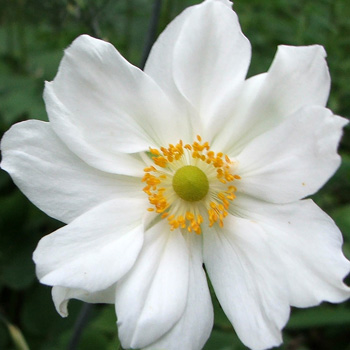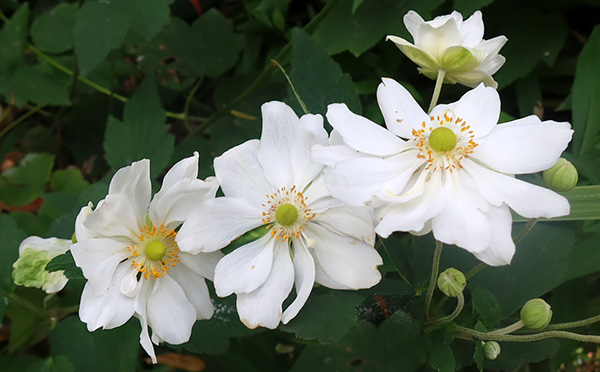Japanese Anemone

Japanese Anemone Flower
When first given some Japanese Anemones I immediately planted them in a hot border by the house. It was quite the wrong place, but luckily for me the soil was desperately dry and I was able to dig out all the bits of roots. Well, I thought I had. Oops.
Down the Driveway
An area down the driveway was designated as a more appropriate patch, and all my plants were moved there. But they didn't go forth and multiplied much. The soil was infertile and inclined to be dry, and just a few white flowers struggled to brighten up this shady spot. I also planted some of the pale pink variety nearby.
Footnote...
Did I in all innocence think I'd managed to remove all those roots? Because now I have a thriving patch of white Japanese Anemones in that original planting place. They are quite delightful from late summer on, particularly when their flowering stems are infiltrated by a pale blue aster. And provided I keep up my watering regime I have masses of beautiful white flowers. I like them.

Japanese Anemones
Another name for this perennial is ''Windflower' - very descriptive, this. Its full name is Anemone hupehensis var. japonica, and the white cultivar I grow could well be 'Honorine Joubert'. And I've always spelt it wrong. Oops...
Not Invasive? Hmm...
Some people have the nerve to call this pretty flower 'invasive', though. Hmm... I guess that any gardeners who need to be totally in control of their perennials should be very, very wary.





